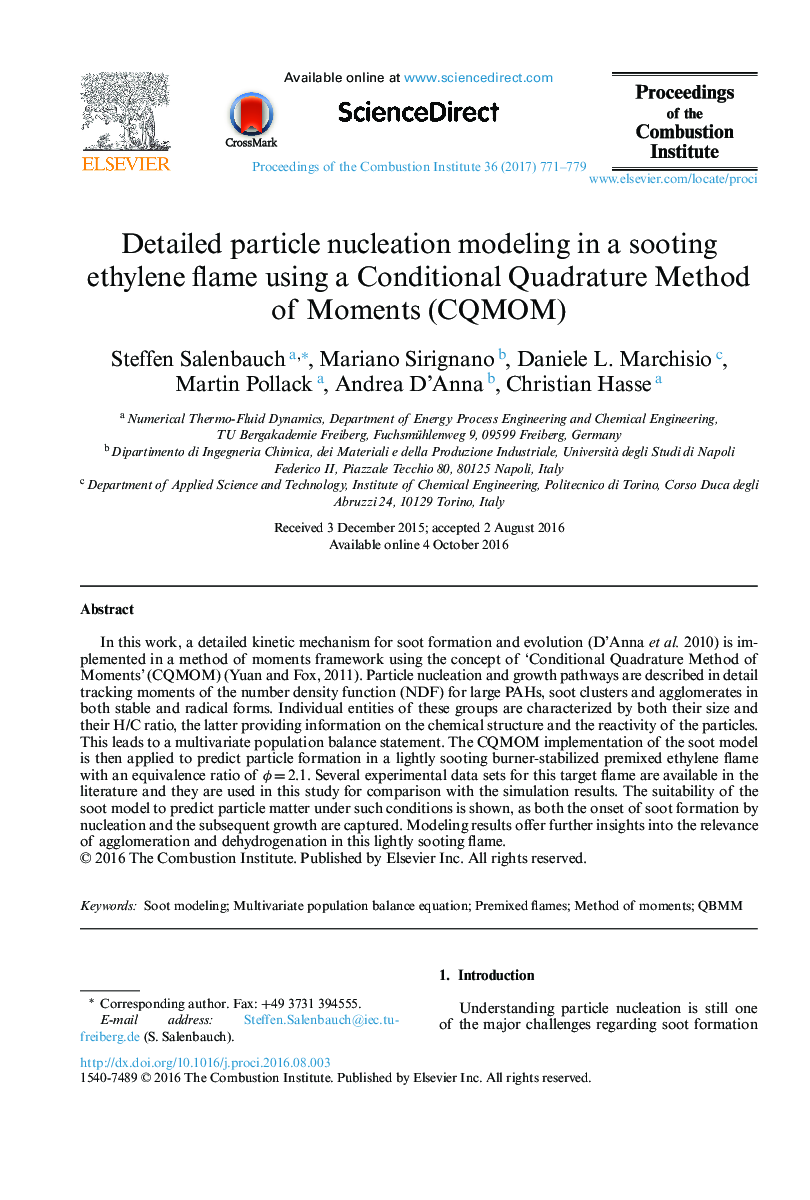| Article ID | Journal | Published Year | Pages | File Type |
|---|---|---|---|---|
| 6478111 | Proceedings of the Combustion Institute | 2017 | 9 Pages |
In this work, a detailed kinetic mechanism for soot formation and evolution (D'Anna et al. 2010) is implemented in a method of moments framework using the concept of 'Conditional Quadrature Method of Moments' (CQMOM) (Yuan and Fox, 2011). Particle nucleation and growth pathways are described in detail tracking moments of the number density function (NDF) for large PAHs, soot clusters and agglomerates in both stable and radical forms. Individual entities of these groups are characterized by both their size and their H/C ratio, the latter providing information on the chemical structure and the reactivity of the particles. This leads to a multivariate population balance statement. The CQMOM implementation of the soot model is then applied to predict particle formation in a lightly sooting burner-stabilized premixed ethylene flame with an equivalence ratio of ÏÂ =Â 2.1. Several experimental data sets for this target flame are available in the literature and they are used in this study for comparison with the simulation results. The suitability of the soot model to predict particle matter under such conditions is shown, as both the onset of soot formation by nucleation and the subsequent growth are captured. Modeling results offer further insights into the relevance of agglomeration and dehydrogenation in this lightly sooting flame.
